CHAPTER
12
Physical Computing Resources
When working to achieve CS education for all, many have turned to the importance of CSforALL’s mission statement:
CSforALL’s mission is to make high quality computer science an integral part of the educational experience of all K–12 students and teachers and to support student pathways to college and career success. (CSforAll, n.d.)
CSforALL is a central resource for individuals and organizations interested in K–12 computer science education. They connect providers, schools, districts, funders, and researchers working toward the goal of providing quality CS education to every child in the U.S. Their organization supports school districts through their SCRIPT: Strategic CSforALL Resource & Implementation Planning Tool. It is a planning framework that guides teams of district administrators, school leaders, and educators through a series of collaborative visioning, self-assessment, and goal-setting exercises. Teams walk away with solid plans and action steps to create or expand upon a computer science education plan for their students.
EXPLORE CSFORALL EDUCATION RESOURCES
Join the movement to bring computer science to all students! Learn more about CSforALL at csforall.org. |
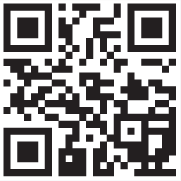 |
CSforALL SCRIPT framework: bit.ly/2JCeiaG |
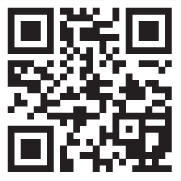 |
Read the report “CS for What? Diverse Visions of Computer Science Education in Practice” at bit.ly/3mXInjn. |
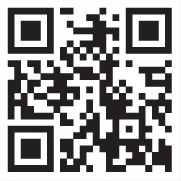 |
While schools all across the world are focusing on computer science and computational-thinking professional development plans, there are some essential steps that all educators can take to help actualize high-quality coding and computational thinking across the curriculum. In achieving equity, we must realize that every community faces a different learning context. Each have their own strengths and resources, as well as their own challenges and funding priorities. Values should drive what computer science education looks like.
One Size Does Not Fit All
Since not every district has the same physical computing devices, the following sections will outline some of the commonly used resources and how current, practicing educators are using them. Some have written district grants for funding, others have gone to Donorschoose.org, and some have even written state-level grants in order to secure the physical resources they need. Oftentimes, professional development is done through individual initiative or in groups banned together with a growth mindset and the mantra of “We will figure this out together.”
Ideally, a district will have a strategic plan in how they are implementing computer science standards and how the resources they select will fit into that structure. There will also be thought put into how those standards will be assessed. If you are one of the pioneers in bringing computer science and/or computational thinking to your district, hopefully you will find the words of wisdom, contained in the following chapters, from fellow educators useful. If you have already begun your CS journey, hopefully you will find some new take-aways that will enhance your journey. And if you have already established your CS pathway, hopefully you will feel a sense of reassurance and a gold nugget or two.
Dot, Dash, and Cue
After Wonder Workshop’s CEO and cofounder Vikas Gupta’s first child was born, he soon realized that in order to prepare his daughter for the world of tomorrow, she would need to be armed with robust technical skills—and the ability to code. He also witnessed firsthand how quickly his daughter learned when she was having fun. So Vikas was inspired to invent a way to engage children to learn to code at a young age.
The Wonder Workshop robots (Dot, Dash, and Cue) put the power of play into the hands of the children, while at the same time allowing for creativity and a ton of flexibility for classroom teachers. Programming languages for these adorable robots include icon-based apps, blocked-based Blockly, and text-based JavaScript. Due to their versatility, you will find these products in more than forty-three countries and in over 20,000 schools worldwide.
For educators just starting out, these robots provide a ton of resources. They offer “Blockly Print Outs,” which are block-based coding templates than can be printed out for unplugged activities or even sent home with students. Their Global Educator Community has over 1,000 members and is a great place to connect for support, as well as new ideas. They also have “Robotics Team Role Cards” you can download, a blog to follow, tips and tricks, and a STEAM Activity Pack.
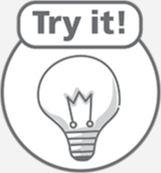 |
Check out the Wonder Workshop educator toolkit to see all their amazing resources: makewonder.com/toolkit-educators. |
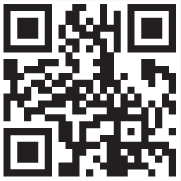 |
Try out these six STEAM activities for Dot, Dash, and Cue: bit.ly/363NXKe. |
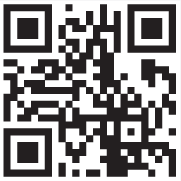 |
To grow your PLN (professional learning network), I encourage you to connect with Jasmine Saab and read her blog post about cross-curricular ways to use Dot, Dash, and Cue in the classroom. She shares her passion of coding and combines as many subjects as possible when utilizing robotics with her fourth grade students. Table 12.1 shows how her projects line up against the standards.
Table 12.1. Jasmine Saab’s Lessons for Dot/Dash/Cue with Subject Area and Standards Connections
| LESSON TITLE | SUBJECT AREA | STANDARDS | CSTA STANDARDS |
2 Digit by 2 Digit Multiplication |
MATH |
4.NBT.B.5: Multiply a whole number of up to four digits by a one-digit whole number, and multiply two two-digit numbers, using strategies based on place value and the properties of operations. Illustrate and explain the calculation by using equations, rectangular arrays, and/or area models. |
1B-AP-11: Decompose (break down) problems into smaller, manageable subproblems to facilitate the program development process. 1B-AP-10: Create programs that include sequences, events, and loops and conditionals. 1B-AP-13: Use an iterative process to plan the development of a program by including others’ perspectives and considering user preferences (the audience). 1B-AP-15: Test and debug (identify and fix errors) a program or algorithm to ensure it runs as intended. 1B-AP-16: Take on varying roles, with teacher guidance, when collaborating with peers during the design, implementation, and review stages of program development. 1B-AP-18: Describe choices made during program development using code comments, presentations, and demonstrations. |
Order of the Planets |
SCIENCE |
How will you make your Bee-Bot go from the letter H to the letter Q? Why didn’t the Bee-Bot do what you wanted it to do? |
|
Battle of Bunker Hill |
SOCIAL STUDIES |
D2.His.1.3-5: Create and use a chronological sequence of related events to compare developments that happened at the same time. |
 |
JASMINE SAAB’S CODING & ROBOTICS LESSONS The full lesson plans and rubrics can be downloaded from Jasmine’s blog post (bit.ly/32ecGdM). |
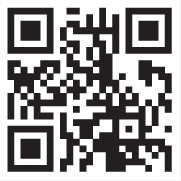 |
Makey Makey
Underneath the guidance of Mitch Resnick, creator of Scratch, two students from the MIT Media Lab initiated an academic and artistic project. What resulted was the creation of a small invention kit that comes with a Makey Makey board, wires, alligator clips, and a USB cable. Cocreators Jay Silver and Eric Rosenbaum believe that everyone is creative, inventive, and imaginative.
Students and teachers alike can let their imaginations run wild when pairing this physical computing device with their coding skills. For example, when paired with Scratch’s block-based programming language, a budding eight-year old inventor created a physical “knife-and-log” interface for cutting virtual wood in an online game.

For educators just starting out, their website supports online classes that will walk you through how the Makey Makey works so you can start inventing. “Lesson Two: Hands on a Makey Makey” (bit.ly/34ZKdtC) could be used as the foundation for a hands-on workshop for administrators and/or educators to learn through play! Their philosophy of invention literacy fits well into any STEM or STEAM program.
To grow your PLN, I encourage you to connect with Julie Smith, the TECHIE teacher, in her blog post about academic ways to use a Makey Makey in the classroom. In her post she has links to a variety of projects she has implemented within core content areas. Table 12.2 shows how her projects line up against the standards.
 |
JULIE SMITH’S MAKEY MAKEY PROJECTS The projects and instructions can be downloaded from Julie’s blog post (bit.ly/2TUo7CB). |
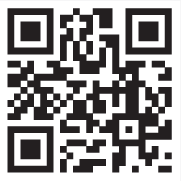 |
Table 12.2. Julie Smith’s Makey Makey Projects with Subject Area and Standards Connections
| LESSON TITLE | SUBJECT AREA | STANDARDS | CSTA STANDARDS |
Affixes with Pencil Lead: Prefixes, Root Words, and Suffixes |
ELA |
L.4.4.B: Use common, grade-appropriate Greek and Latin affixes and roots as clues to the meaning of a word. |
1B-AP-10: Create programs that include sequences, events, loops, and conditionals. |
Money: Counting Coins |
MATH |
2.MD.C.8: Solve word problems involving dollar bills, quarters, dimes, nickels, and pennies using $ and ¢ symbols appropriately. Example: if you have two dimes and three pennies, how many cents do you have? |
1A-CS-02: Use appropriate terminology in identifying and describing the function of common physical components of computing systems (hardware). |
Water Piano: Sound/Pitch |
SCIENCE |
1-PS4-1: Plan and conduct investigations to provide evidence that vibrating materials can make sound and that sound can make materials vibrate. |
1B-AP-11: Decompose (break down) problems into smaller, manageable subproblems to facilitate the program development process. 1B-AP-10: Create programs that include sequences, events, and conditionals. |
Interactive Compass Rose: Cardinal Directions |
SOCIAL STUDIES |
D2.Geo.1.K-2: Construct maps, graphs, and other representations of familiar places. |
1A-CS-02: Use appropriate terminology in identifying and describing the function of common physical components of computing systems (hardware). |
Content area standards are from NGSS, CCSS, C3 framework, and CSTA standards.
Ozobot: Bit and Evo
Nader Hamda, the CEO and founder of Ozobot, recognizes that these are exponentially changing times and believes that many of the jobs today’s students will have do not even exist yet. To help educators prepare students for potential jobs, Hamda’s team at Ozobot had the vision of making it easy for educators to teach all subjects with their physical computing devices—and inspire all students to learn and create their own future.
It is no accident that the Ozobot team is made up of a diverse group of artists and engineers. They collaborate with children every day, as children are their inspiration. By watching students play, share, and create with their robots, Ozobot uses student feedback to make iterative improvements on their products. Like many of the physical computing devices, students can code both Bit and Evo using Google’s Blockly. However, Ozobot has a unique screen-free color-code system by which non-readers can engage in coding their robot. By using markers or stickers on white paper, students can create color-code patterns along a solid black line.
The Bit and Evo robots use sensors to follow the solid black line, and when it reaches one of the color patterns, it will follow the command associated with the colors (for example, spin or go left/right).
To support educators, Ozobot Classroom has a free sign-up that includes interactive teacher training, single-click class setup, standards-aligned lessons for all grades and all subjects, and it integrates with Google Classroom. The Ozobot blog is another great resource; they recognize an educator of the month and share how that educator is using Evo and/or Bit to connect with content standards. For example, Kendra Jordan was their educator of the month for July 2020, and she shared how she engaged one of her students who was having a difficult time learning about coordinate planes in math. Since this scholar was interested in video games, she met his social-emotional needs by recognizing that he was a “gamer.” She then showed him how video games used coordinate planes by the people who code them, thus turning a gamer into a game-changer! See the full blog post at bit.ly/362QvIo.
To grow your PLN, I encourage you to connect with Deanna Brewer and her cross-curricular lessons when using Ozobot in the classroom. She shares her passion for STEM by supporting students and teachers in integrating these bots into core content areas. Table 12.3 shares how her projects line up against the standards.
Table 12.3. Deanna Brewer’s Ozobot Lessons with Subject Area and Standards Connections
| LESSON TITLE | SUBJECT AREA | STANDARDS | CSTA STANDARDS |
Mapping Out Geometry |
MATH |
4.G.1.1: Draw points, lines, line segments, rays, angles (right, acute, obtuse), and perpendicular and parallel lines. Identify these in two-dimensional figures. |
1B-AP-10: Create programs that include sequences, events, loops, and conditionals. |
Ozobots Life Cycles |
SCIENCE |
3-LS1-1: Develop models to describe that organisms have unique and diverse life cycles, but all have in common birth, growth, reproduction, and death. |
1B-AP-15: Test and debug (identify and fix errors) a program or algorithm to ensure it runs as intended. 1B-AP-16: Take on varying roles, with teacher guidance, when collaborating with peers during the design, implementation, and review stages of program development. |
Content area standards are from NGSS, CCSS, C3 framework, and CSTA standards.
 |
OZOBOT LESSON PLANS Check out Deanna’s full lesson plans at nofearcoding.org/ozobot. |
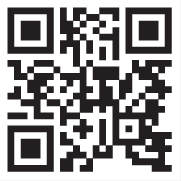 |
Robo Wunderkind
Rustem Akishbekov, the founder of Robo Wunderkind, came up with the idea while building robots on the Arduino platform. The robots were too techie—not an easy entry into the world of technology—so he set out to make learning coding and robotics as fun and simple as playing with building blocks. These engaging robots beg for the use of creative thinking with Robo Wunderkind’s unique LEGO-like compatible blocks, which include a variety of sounds, lights, and sensors.
The coding options for these physical computing devices include remote-control options, two visual icon-based coding apps, RoboBlockly, as well as using a free open-source Python API and an Arduino Library. What is most impressive is their philosophy of “Imagine − Build − Code − Reflect,” as this helps to support children’s cognitive development and offers a new way to learn coding, robotics, and STEAM skills through open-ended play. Their curriculum is built on a constructivist learning theory and serves children from kindergarten through middle school.
To grow your PLN, I encourage you to connect with the Howard B. Owens Science Center in Lanham, Maryland. It is a 27,500-square-foot facility that is owned and operated by Prince George County public schools. Its mission is to provide excellence in STEM education through student-centered programs and services. Their staff of teachers provide students with hands-on exploratory learning. Each year, first grade students come to the center to draw, build, code, and test robots to complete a science mission task.
Sallie Smith, the computer science program instructor, has the following to say about her program: “The blocks are color coded by function, [and] the blocks are easy to put together and can make many different kinds of robots, [and] the electrical components are inside the block modules and kids love to build, code and test these robots.”
Table 12.4 shows how her program lines up against the standards.
 |
EXPLORE ROBO WUNDERKIND Check out the program description and materials for the Design, Build and Code Robots program at nofearcoding.org/wunderkind. |
 |
Table 12.4. Sallie Smith’s Design, Build and Code Robots program with Subject Area and Standards Connections
| PROGRAM | SUBJECT AREA | STANDARDS | CSTA STANDARDS |
Robo Wunderkind: Design, Build, and Code Robots |
ELA |
SL.2.5: Create drawings to clarify ideas, thoughts, and feelings. |
1A-CS-01: Select and operate appropriate software to perform a variety of tasks, and recognize that users have different needs and preferences for the technology they use. |
MATH |
2.MD.A.3: Estimate lengths using units of inches, feet, centimeters, and meters. |
1A-AP-11: Decompose (break down) the steps needed to solve a problem into a precise sequence of instructions. |
|
SCIENCE |
K-2 EST1-3. Analyze data from tests of two objects designed to solve the same problem to compare the strengths and weaknesses of how each performs. |
Content area standards are from NGSS, CCSS, C3 framework, and CSTA standards.
CoDrone Mini
Lifelong entrepreneur, baseball fan, and foodie, Hansol Hong, established Robolink in 2012. Hailing from Seoul, Korea, this robotics company has taken root in San Diego, California with its sole purpose of encouraging students to engage in STEM. According to this CEO, “We make fun and approachable robotics kits that bring computer science to life and teach real industry competency.”
This company’s mission is to make STEM education accessible, engaging, and fun for all. They offer a variety of teacher resources including quickstart guides, FAQ, as well as access to free lesson plans, video tutorials, and learning guides. The CoDrone Mini is an excellent resource for middle school math and science teachers. With their LED and gyroscope sensors, students can explore how the physical world works by plotting a variety of data points.
Given the recent demand for drone pilots, skilled technicians and programmers will also be needed. “Not only do students need to learn the skills of flying, they also need to master the skills of programming and computational thinking to solve complex problems” (Bartholomew, 2018). Utah State University has developed one such curriculum for 4th-8th grade students. While not specifically for the CoDrone Mini, educators could easily adapt the following basic unit outline, adapted from their full lesson plan:
Unit 1: Following safety procedures
• 1.1 Follow mini drone safety practices.
• 1.2 Sync control device to specific minidrone.
Unit 2: Flying the mini drone remotely
• 2.1 Hover the minidrone at specified altitudes.
• 2.2 Fly the minidrone in a square pattern without using pitch and roll controls.
• 2.3 Fly the minidrone in a square pattern using yaw controls.
• 2.4 Fly the minidrone through an obstacle course.
Unit 3: Flying the Parrot mini drone autonomously
• 3.1 Program the minidrone to fly a simple pattern.
• 3.2 Program the minidrone to fly through an obstacle course.
 |
CODRONE LESSON PLANS To see the full lesson plan and resources, check out bit.ly/2NeJwpX. |
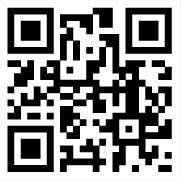 |